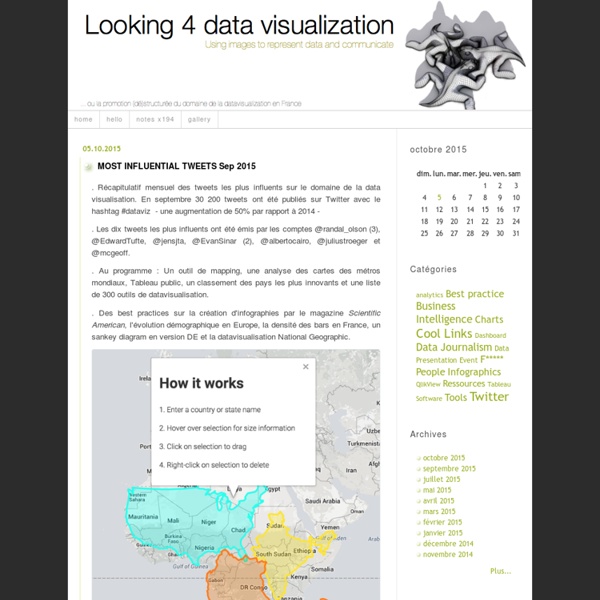



The Functional Art: An Introduction to Information Graphics and Visualization GRASS GIS - Home Cytoscape: An Open Source Platform for Complex Network Analysis and Visualization Network Administration | Admin Tools | Yammer Simple Rollout & Automatic Upgrades Say goodbye to complex implementation and upgrade processes. Yammer rolls out with minimal setup and users get access to new features instantly – including the occasional bug fix or security patch – so there’s no need to install or upgrade anything. Scalability & Uptime Whether you have ten or ten thousand users, Yammer reliably scales to your company needs. Instant Onboarding Yammer’s user-friendly interface and intuitive design make it easy for new users to start collaborating right away – without intensive training.
Interactive Dynamics for Visual Analysis Graphics Jeffrey Heer, Stanford University Ben Shneiderman, University of Maryland, College Park The increasing scale and availability of digital data provides an extraordinary resource for informing public policy, scientific discovery, business strategy, and even our personal lives. Visualization provides a powerful means of making sense of data. The goal of this article is to assist designers, researchers, professional analysts, procurement officers, educators, and students in evaluating and creating visual analysis tools. Our focus on interactive elements presumes a basic familiarity with visualization design. Within each branch of the taxonomy presented here, we describe example systems that exhibit useful interaction techniques. To enable analysts to explore large data sets involving varied data types (e.g., multivariate, geospatial, textual, temporal, networked), flexible visual analysis tools must provide appropriate controls for specifying the data and views of interest. 1. 2. 3.
Maptitude Geographic Information System and mapping software Mapping made easy Answer a few simple questions and Create-a-Map Wizard™ makes a map at any scale, from all of the countries of the world, to streets around an address, landmark, or intersection. With a few clicks of the mouse, MapWizard® automatic mapping technology helps you create color and pattern maps, dot-density maps, scaled-symbol maps, and maps with integrated pie or bar charts. Once you understand the patterns hidden in the numbers, share your maps to tell your stories. Maptitude mapping software is only US$695 and includes a FREE country package ($595 value) that includes an up-to-date street layer with addresses for pin-mapping (geocoding) and travel time information for computing routes and drive-time rings.
Fast Thinking and Slow Thinking Visualisation Last week I attended the Association of American Geographers Annual Conference and heard a talk by Robert Groves, Director of the US Census Bureau. Aside the impressiveness of the bureau’s work I was struck by how Groves conceived of visualisations as requiring either fast thinking or slow thinking. Fast thinking data visualisations offer a clear message without the need for the viewer to spend more than a few seconds exploring them. These tend to be much simpler in appearance, such as my map of the distance that London Underground trains travel during rush hour. The explicit message of this map is that surprisingly large distances are covered across the network and that the Central Line rolling stock travels furthest. or the seemingly impenetrable (from a distance at least), but wonderfully intricate hand drawn work of Steven Walter (click image for interactive version). So do the renowned folks at the NY Times Graphics Dept. prefer fast or slow thinking visualisations?
Amazing Old (and Free) Visualization Books